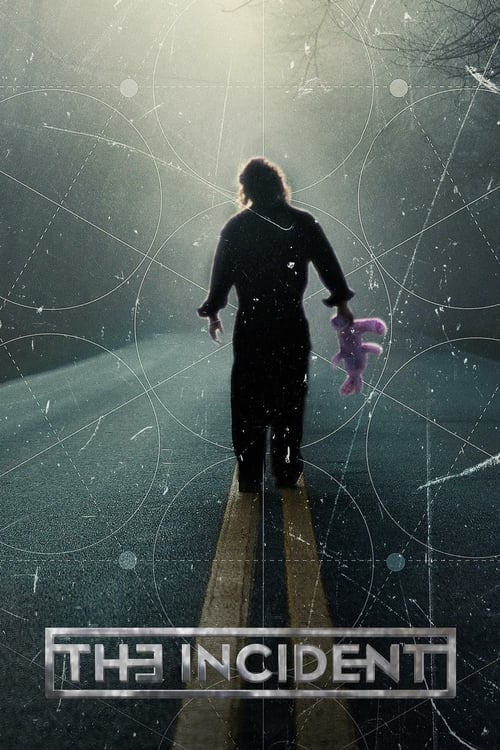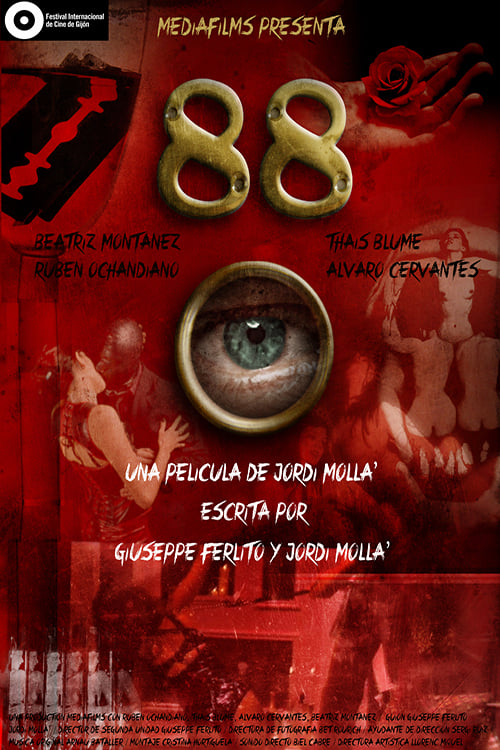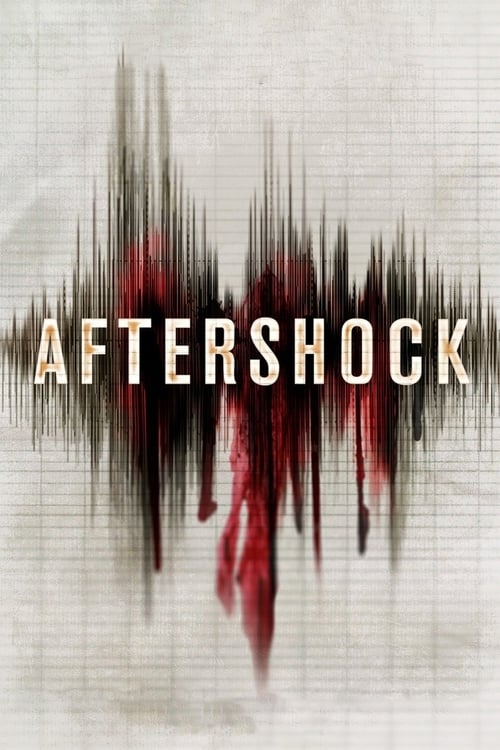
Ask Your Own Question
What is the plot?
[REC] 4: Apocalypse - Complete Plot Narrative
The nightmare that began in a cramped Madrid apartment building refuses to die. As the sun rises on what should be a day of salvation, a Special Forces team storms through the corridors of the infected building, their weapons raised, their mission clear: extract the sole survivor and burn the source of the contagion to ash. Ángela Vidal, the young television reporter who entered that building seeking a story and found only horror, emerges from the chaos alive but forever changed. She is unconscious, carried by the soldiers through clouds of dust and blood, unaware that she carries within her body the seeds of apocalypse itself.
The rescue operation is brutal and efficient. Infected firefighters and residents attack the Special Forces team in frenzied waves, their bodies twisted by something that defies medical classification. Among the soldiers fighting through the carnage are Lucas and Guzman, two men whose names will echo through the coming hours in ways they cannot yet imagine. They complete their assignment--Ángela is secured, the building is marked for destruction--but no one realizes that the infection has already escaped, clinging to the rescued reporter like an invisible passenger.
Ángela awakens on a ship, her mind foggy, her body restrained. Cold metal surrounds her. The gentle rocking of waves tells her she is no longer on land. She is chained to a bed in a small cabin, the walls painted institutional white, a porthole revealing only endless ocean. She has no memory of how she arrived here, no understanding of why she is imprisoned. The confusion and fear that grip her are justified--she has been transported to a high-security quarantine facility, an oil tanker converted into a floating laboratory, anchored miles offshore where the infection cannot reach civilization.
The ship's command structure becomes clear as Ángela explores. Dr. Ricarte and Dr. Ginard oversee the medical operations, their faces etched with the intensity of men racing against an invisible clock. They are searching for a cure, studying the infection that has ravaged Spain, attempting to understand the parasite that transforms human beings into something other than human. Captain Ortega commands the vessel, a weathered man on what he believes will be his final voyage. Nic, the ship's radio operator and hacker, works to retrieve footage from Ángela's camera--the very camera that documented the horrors of the apartment building, footage that might hold the key to understanding the outbreak.
Guzman is also aboard, the soldier who pulled Ángela from the building, and with him comes an elderly woman who survived an outbreak at a wedding, another victim of the infection's spread. These survivors are not free passengers but subjects in an experiment, though they do not yet fully comprehend this reality. The ship is their prison and their sanctuary, a floating island of quarantine in an endless sea.
The scientists believe they have the situation under control. In their laboratory, they maintain a test subject--an infected monkey--kept in secure containment as they work to develop an antidote. They run tests, they analyze blood samples, they search for the biological mechanism that might reverse the infection. But containment, as history has repeatedly proven, is an illusion that shatters at the first moment of negligence.
That moment arrives during a power outage. The lights flicker and die. Emergency systems fail to engage. In the darkness, someone--whether by accident or design, the film never clarifies--releases the infected monkey from its cage. The animal, driven by hunger and rage, escapes into the corridors of the ship. It finds the cook in the galley, and what follows is a sequence of visceral brutality. The monkey attacks with the ferocity of something no longer bound by the rules of nature, and the cook, bleeding and infected, returns to his duties.
The contamination spreads through lunch. The cook's blood mingles with the food served to the crew and guards. Ingestion becomes infection. Within hours, the majority of the crew is transformed, their bodies convulsing with the parasite's influence, their minds fracturing into rage. The ship, which was meant to be a sanctuary, becomes a tomb.
Dr. Ricarte watches the outbreak unfold with clinical detachment mixed with growing desperation. He attempts to administer an antidote to the cook, but the treatment fails. The cook's body rejects the cure, and the infection continues its relentless progression. Ricarte's face hardens. Protocol demands action. If the infection cannot be cured, it must be contained, and if it cannot be contained, it must be destroyed--along with anyone who might carry it.
Nic retrieves the footage from Ángela's camera, and what he discovers sends shockwaves through the medical team. The footage shows a girl named Tristana Medeiros, infected and dying, transferring the worm-like parasite directly to Ángela. The transfer is visible, undeniable. Ángela is not simply a survivor--she is the vector, the living incubator for the infection. Dr. Ricarte's suspicions crystallize into certainty. Ángela is patient zero aboard this ship, and she must be neutralized.
But Ángela is not alone. She has allies in the chaos--Lucas, Guzman, Nic, and the elderly woman who has already survived one outbreak and refuses to surrender to another. Together, they move through the ship's corridors, fighting off the infected, searching for a way to survive. The ship becomes a maze of horrors, each compartment a potential death trap, each shadow concealing something that was once human but is no longer.
Ricarte's obsession with extracting the parasite from Ángela's body becomes an obsession with extraction itself. He prepares for surgery, determined to cut the infection out of her, to study it, to understand it, to weaponize it perhaps. But before he can complete his work, the infected Goro attacks. In the chaos of the assault, Ángela escapes, fleeing through the ship's bowels, her heart pounding, her survival instinct overriding everything else.
She ambushes Ricarte in a corridor, and in a moment of primal fury, she bites him. His blood spills, and for a moment, it seems the infection has claimed another victim. But when Ricarte's blood is scanned, the results read negative. He is not infected--or so the machines tell him. Yet Ricarte cannot shake the conviction that Ángela has deceived him, that the parasite is cunning enough to hide from detection, that she has infected him with something that will transform him in ways the scanners cannot yet measure.
The revelation that shatters everything comes when the parasite's true nature is exposed. During the rescue from the apartment building, the parasite transferred not only to Ángela but also to Guzman. The soldier who saved her has become her greatest threat. Guzman, infected and driven by the parasite's influence, traps Ángela within the ship's lowest levels. He moves toward her with singular purpose--to transfer the parasite back into her body, to make her the sole carrier once more, to free himself from the infection's grip.
But Ángela is not defenseless. Nic stands beside her, and together they face Guzman as he advances. The confrontation is brief and brutal. They raise a harpoon gun--a weapon pulled from the ship's arsenal--and fire. The harpoon strikes true, and Guzman falls, the parasite dying with him, his body collapsing to the deck.
In that moment of victory, Dr. Ricarte makes his final decision. He launches the ship's self-destruct sequence. The vessel that was meant to contain the infection will instead be consumed by it, destroyed utterly, sunk to the ocean floor where the parasite cannot spread. The ship's systems begin their countdown. Alarms wail through the corridors. The infected, sensing the end, begin their final assault.
Ángela and Nic run. They move through the ship as it shudders around them, as explosions bloom in the depths, as the infected close in from all sides. They reach the deck, and without hesitation, they jump. The ocean receives them, cold and vast and indifferent. Behind them, the ship erupts in a final, apocalyptic explosion. Fire consumes the vessel. The infected are incinerated. The laboratory, the containment cells, the evidence of everything that transpired--all of it is reduced to ash and sinking metal.
Underwater, in the depths where light barely penetrates, something moves. The parasite, separated from its host, twists and writhes in the darkness. A fish, drawn by curiosity or hunger, approaches. The parasite enters the fish's body, and the infection continues its journey, not ended but transformed, not contained but dispersed. The ocean, which was meant to be a barrier, becomes a highway.
But for Ángela and Nic, the nightmare has ended. They surface, gasping for air, and swim toward the distant shore. They are rescued, dried, clothed in normal garments. The credits roll, and in those final moments, we see them in a cab, driving through the streets of a city, heading home. Ángela stares out the window, her eyes reflecting something that cannot be unseen, something that cannot be forgotten. She has survived. She has escaped. She has returned to civilization.
Yet the final image of the parasite entering the fish lingers in the viewer's mind like a curse. The infection has not been destroyed. It has merely changed form. It swims in the depths, waiting, evolving, preparing for the next chapter in a story that refuses to end. Ángela may have escaped the ship, but the true apocalypse--the one that cannot be contained by quarantine or destroyed by explosives--continues in the darkness below, patient and eternal, ready to rise again when the moment is right.
What is the ending?
In the ending of [REC]⁴ Apocalypse, the protagonist, Angela Vidal, confronts the reality of the infection and the consequences of her actions. After a series of intense confrontations with infected individuals and the military, Angela ultimately sacrifices herself to prevent the spread of the virus. The film concludes with a sense of ambiguity regarding the fate of the remaining characters and the future of the infection.
As the climax unfolds, Angela, having survived the horrors of the quarantine ship, finds herself in a desperate situation. The military, tasked with containing the outbreak, is struggling to maintain control as the infected begin to overwhelm their defenses. Angela, who has been a beacon of resilience throughout the chaos, is faced with the grim reality that the infection is not just a physical threat but a moral one as well.
In a pivotal scene, Angela discovers that the military has been conducting experiments on the infected, trying to harness the virus for their own purposes. This revelation deepens her resolve to stop the madness. She confronts the lead military officer, who is torn between his duty and the ethical implications of their actions. The tension escalates as Angela fights to save the remaining survivors, including a few soldiers who have begun to question their orders.
As the infected breach the last line of defense, chaos erupts on the ship. Angela, driven by a fierce determination to protect the innocent, makes a heart-wrenching decision. She realizes that the only way to contain the outbreak is to destroy the source of the infection. In a final act of bravery, she injects herself with a lethal dose of the virus, knowing that it will prevent her from becoming a threat to others.
The scene is charged with emotion as Angela bids farewell to her fellow survivors, who are left in shock and despair. The camera captures her resolve as she walks into the infected zone, a haunting reminder of her journey from a reporter to a reluctant hero. The screen fades to black as the sounds of chaos echo in the background, leaving the audience with a chilling sense of uncertainty.
In the aftermath, the remaining characters are left to grapple with the consequences of Angela's sacrifice. The military, now faced with the reality of their failed containment efforts, is left to deal with the fallout of their actions. The fate of the infected remains ambiguous, hinting at the possibility of further outbreaks.
The film concludes with a lingering question about the nature of humanity in the face of horror. Angela's sacrifice serves as a poignant reminder of the lengths one will go to protect others, even at the cost of their own life. The final scenes leave viewers contemplating the fragility of life and the moral dilemmas that arise in desperate situations.
Is there a post-credit scene?
In [REC]⁴ Apocalypse, there is no post-credit scene. The film concludes with a definitive ending that wraps up the story without any additional scenes after the credits. The narrative focuses on the aftermath of the infection outbreak, centering on the character of Ángela Vidal as she navigates the chaos aboard a quarantined ship. The film ends on a tense note, leaving the audience with a sense of closure regarding the immediate events, but it does not provide any further hints or scenes that would extend the story beyond the main plot.
What happens to Angela Vidal after she escapes the building in the first film?
Angela Vidal, the protagonist from the previous films, is rescued from the quarantined building and taken aboard a military ship. However, she is still infected with the virus, which leads to dire consequences.
How does the infection spread on the ship?
The infection spreads on the ship when a crew member, who is unaware of the virus's presence, comes into contact with Angela. This contact leads to a series of violent outbreaks as the infected begin to attack the crew and other survivors.
What is the significance of the character of the priest in the film?
The priest, who is also aboard the ship, represents a conflicting moral compass. He believes that the infected are possessed and tries to perform an exorcism, which adds tension and highlights the struggle between faith and the reality of the infection.
How does the character of the soldier, who is part of the military team, evolve throughout the film?
The soldier initially appears to be a hardened and pragmatic character, focused on survival. However, as the infection spreads and chaos ensues, he becomes increasingly conflicted, grappling with his sense of duty versus the moral implications of his actions.
What role does the character of the little girl play in the story?
The little girl, who is one of the survivors, serves as a symbol of innocence amidst the horror. Her presence evokes protective instincts in the adult characters, particularly Angela, and her fate becomes a pivotal emotional point in the narrative.
Is this family friendly?
[REC]⁴ Apocalypse is not considered family-friendly due to its intense horror elements and graphic content. Here are some potentially objectionable or upsetting aspects that may affect children or sensitive viewers:
-
Graphic Violence: The film contains scenes of intense violence, including attacks by infected individuals, which can be quite disturbing.
-
Gore: There are moments featuring blood and dismemberment that are explicit and may be unsettling for viewers.
-
Jump Scares: The film employs numerous jump scares that can provoke anxiety and fear, particularly in younger audiences.
-
Themes of Infection and Possession: The storyline revolves around a viral outbreak that leads to possession-like symptoms, which can be frightening and distressing.
-
Dark Atmosphere: The overall tone of the film is bleak and tense, contributing to a sense of dread that may be overwhelming for some viewers.
-
Psychological Horror: The film explores themes of survival and fear, which can evoke strong emotional responses.
These elements make [REC]⁴ Apocalypse more suitable for mature audiences rather than children or those sensitive to horror themes.

![[REC]⁴ Apocalypse (2014) - Movie poster and promotional image](https://image.tmdb.org/t/p/w500/nlSSZNESHkY1iPzYnpcRvYUr7Mz.jpg)



































